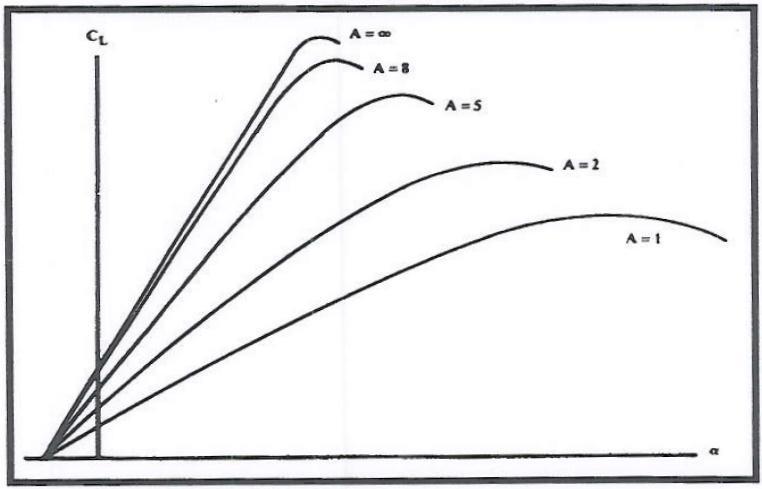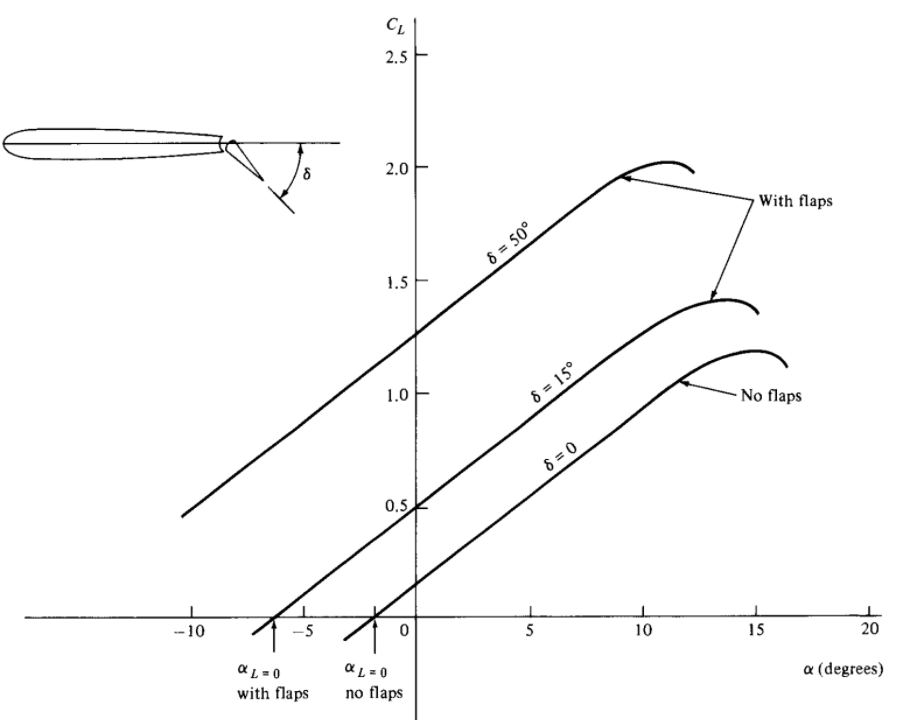4.1.3 Optional: Lift curve slope in more detail
Course subject(s)
Module 4: Novel Aircraft Design
In lecture 4B, Roelof Vos mentioned that the design of the Flying V, specifically the low aspect ratio and high sweep angle, affect the lift curve slope of the airplane. During take-off and landing, this results in quite a high attitude of the airplane. This is not the first time that this lift curve slope was mentioned, in Week 2 Jacco Hoekstra briefly showed this curve during Part A of his lecture on the physics of flight.
In this optional material, we will go deeper into the lift curve slope and mention a few ways in which it is affected.
We hope you enjoy this piece of bonus content!
The SA01x team
The lift curve slope is a graphical way to represent the lift coefficient (CL) for a given angle of attack. It generally looks something like the graph below. For most airfoils, increasing the angle of attack results in an increase in CL and therefore an increase in lift. However, increasing the angle of attack can only be done up to a certain extent until a maximum value of CL is obtained. Recall that the wing will stall at very high angles of attack, a situation you want to avoid during operation.
botag., Public domain, via Wikimedia Commons
To understand the effect of the aspect ratio on the lift curve, it is first necessary to introduce the concept of downwash. When an airfoil is at a certain angle of attack, the local flow is affected by the airfoil and therefore changes direction. This generally results in an induced flow at an induced angle of attack.
The induced flow lowers the angle of attack of the local flow around the wing and thereby results in a decrease in lift. This can be expressed as a reduction of the lift coefficient. The derivation for an expression of this effect is out of the scope of this additional material. The result turns out to be dependent on the aspect ratio and can be seen in the equation below.

where:
CL= the final lift coefficient;
CL0 = the free stream lift coefficient and
AR = aspect ratio
A graph of this equation can be made for different angles of attack and different aspect ratios. Such an image can be seen below. In the image, it is clear that the value for CL and thus the lift decreases for a low aspect ratio.

Effect of the aspect ratio of the lift coefficient via the lift curve.
Serghides, V. (2013) Aerospace Vehicle Design AE3-403 Lecture Notes. Department of Aeronautics, Imperial College London, via Research Gate.
Especially during take-off and landing, when the airspeed is relatively low, it is important to produce enough lift. This is generally accomplished by tilting the airplane (increasing the angle of attack) and using high-lift devices (see below).
When only considering the change in angle of attack, generating more lift at low speeds with a low lift curve slope requires a larger angle of attack. This is part of the explanation of why the Flying V will take off and land with a fairly high attitude.
As mentioned above, another way to influence the lift curve slope is by the use of high lift devices. These devices have the goal of increasing the value of CL and thereby increasing lift. This is especially important during take-off and landing, when the airspeed is relatively low.
High lift devices are incorporated into the wing of an airplane. The most common high lift device is a flap, a portion of the wing that can move in order to generate more lift. Flaps are generally located at the trailing edge of a wing and exist in a variety of shapes and sizes. They generally aim at increasing the camber of the airfoil, increasing the chord (thereby increasing the wing area) or both resulting in more lift. The effect of a downward deflecting flap can be seen in the figure below.

Illustration of the effect of flaps on the lift curve. The numbers shown are typical of a modem medium-range jet transport.
John D. Anderson. Introduction to Flight, 3rd Edition. McGraw-Hill 1989. ISBN 0-07-001641-0.

Sustainable Aviation: The Route to Climate-Neutral Aviation by TU Delft OpenCourseWare is licensed under a Creative Commons Attribution-NonCommercial-ShareAlike 4.0 International License.
Based on a work at https://online-learning.tudelft.nl/courses/sustainable-aviation-the-route-to-climate-neutral-aviation/



